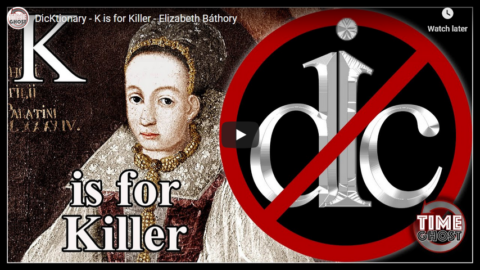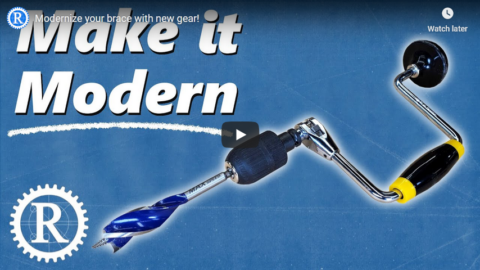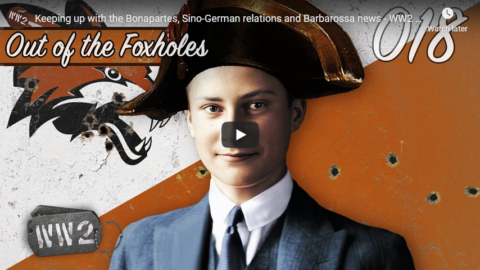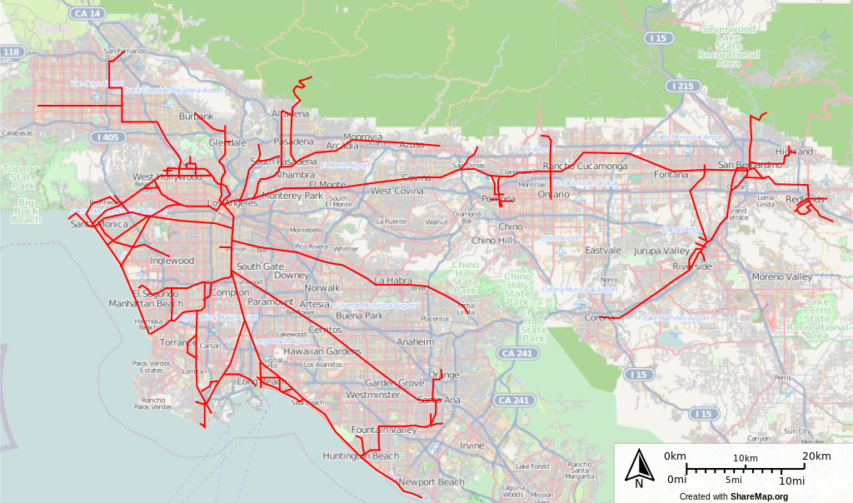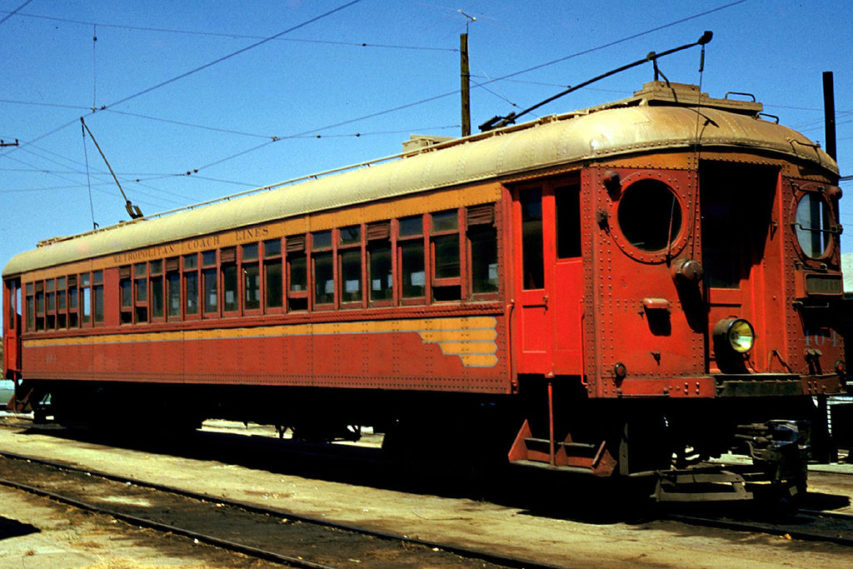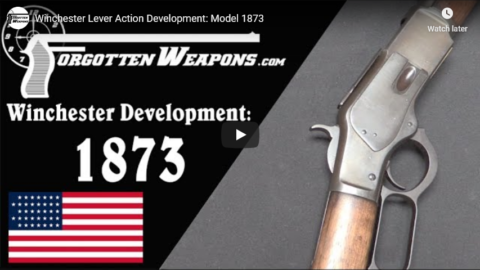TimeGhost History
Published 7 Oct 2020Elizabeth Bathory was a Hungarian noblewoman who holds the world record as the most prolific female murderer. This is her gruesome life story.
Join us on Patreon: https://www.patreon.com/TimeGhostHistory
Hosted & Written by Indy Neidell
Director: Astrid Deinhard
Producers: Astrid Deinhard and Spartacus Olsson
Executive Producers: Astrid Deinhard, Indy Neidell, Spartacus Olsson, Bodo Rittenauer
Creative Producer: Joram Appel
Post-Production Director: Wieke Kapteijns
Research by: Indy Neidell
Image Research by Karolina Dołęga
Edited by: Karolina Dołęga
Sound design: Marek KamińskiVisual Sources:
– Wellcome Images
– Paul K from Flickr https://cutt.ly/Paul_K_Flickr
– Andreone93 from Wikimedia https://cutt.ly/Andreone93_Bathory
– Cleveland Museum of Art
– Metropolitan Museum of Art
– Lluís Ribes Mateu from Flickr https://www.flickr.com/photos/lluisri…
– Yvette Hoitink from Flickr https://www.flickr.com/photos/yhoitink/
– Civertan from Wikimedia https://cutt.ly/Civertan
– Jean Louis Mazieres https://www.flickr.com/photos/mazanto/
– Icons from The Noun Project: anti trust by Angelo Troiano, Castle by Vicons Design, Waiter by ProSymbols, Nun by Wolf Böse, Priest by Luis Prado, reject by Alice Design, User by Round Pixel, Zoo by Eugene Dobrik, User by Round Pixel.“The Wedding March” – Traditional
“Stranger Days” – Alexandra Woodward
“Rise Of The Titan” – FormantXArchive by Screenocean/Reuters https://www.screenocean.com.
A TimeGhost chronological documentary produced by OnLion Entertainment GmbH.
October 8, 2020
DicKtionary – K is for Killer – Elizabeth Báthory
Modernize your brace with new gear!
Rex Krueger
Published 7 Oct 2020New woodworkers need a new brace for drilling! Plus an updated tool list! (see below)
More video and exclusive content: http://www.patreon.com/rexkrueger
Plans, t-shirts, and hoodies: http://www.rexkrueger.com/storeProducts in this video: (Scroll Down)
Garrett-Wade Versatile Brace: https://www.garrettwade.com/versatile-9-special-brace-drill.html
Hex adapter for standard brace: https://www.fine-tools.com/bohr1.html
(Scroll down, look for item #300221)The following are affiliate links:
Quick-Release Hex Adaptor: https://amzn.to/3ng8vGS
Keyless 3-Jaw Chuck: https://amzn.to/3n7jaUx
Ship Auger Bits: https://amzn.to/2SjLx3o
Freud Forstner Bit Set: https://amzn.to/36yr2IV
Irwin Spade Bits: https://amzn.to/3ncv7s2
Diamond Hone: https://amzn.to/3cQFVr5James Wright’s video on Wood Owl Auger Bits: https://www.youtube.com/watch?v=bjAomHJ_8mE
(If you buy the bits, use James’ link and he gets a little commission.)Sign up for Fabrication First, my FREE newsletter: http://eepurl.com/gRhEVT
Wood Work for Humans Tool List (affiliate):
*Cutting*
Gyokucho Ryoba Saw: https://amzn.to/2Z5Wmda
Dewalt Panel Saw: https://amzn.to/2HJqGmO
Suizan Dozuki Handsaw: https://amzn.to/3abRyXB
(Winner of the affordable dovetail-saw shootout.)
Spear and Jackson Tenon Saw: https://amzn.to/2zykhs6
(Needs tune-up to work well.)
Crown Tenon Saw: https://amzn.to/3l89Dut
(Works out of the box)
Carving Knife: https://amzn.to/2DkbsnM
Narex True Imperial Chisels: https://amzn.to/2EX4xls
(My favorite affordable new chisels.)
Blue-Handled Marples Chisels: https://amzn.to/2tVJARY
(I use these to make the DIY specialty planes, but I also like them for general work.)*Sharpening*
Honing Guide: https://amzn.to/2TaJEZM
Norton Coarse/Fine Oil Stone: https://amzn.to/36seh2m
Natural Arkansas Fine Oil Stone: https://amzn.to/3irDQmq
Green buffing compound: https://amzn.to/2XuUBE2*Marking and Measuring*
Stockman Knife: https://amzn.to/2Pp4bWP
(For marking and the built-in awl).
Speed Square: https://amzn.to/3gSi6jK
Stanley Marking Knife: https://amzn.to/2Ewrxo3
(Excellent, inexpensive marking knife.)
Blue Kreg measuring jig: https://amzn.to/2QTnKYd
Round-head Protractor: https://amzn.to/37fJ6oz*Drilling*
Forstner Bits: https://amzn.to/3jpBgPl
Spade Bits: https://amzn.to/2U5kvML*Work-Holding*
Orange F Clamps: https://amzn.to/2u3tp4X
Screw Clamp: https://amzn.to/3gCa5i8Get my woodturning book: http://www.rexkrueger.com/book
Follow me on Instagram: @rexkrueger
Fallen Flag — The Pacific Electric Railway
 This month’s Classic Trains featured fallen flag is southern California’s iconic Pacific Electric Railway Company, whose streetcars, interurbans, and buses served the vast area in and around Los Angeles and San Bernardino from 1901 until the passenger services were sold off in 1953. The electric service was converted to bus and the last electric rail line was discontinued in 1961. At its peak in the 1920s the “Red Cars” service was said to be the largest electric railway system in the entire world.
This month’s Classic Trains featured fallen flag is southern California’s iconic Pacific Electric Railway Company, whose streetcars, interurbans, and buses served the vast area in and around Los Angeles and San Bernardino from 1901 until the passenger services were sold off in 1953. The electric service was converted to bus and the last electric rail line was discontinued in 1961. At its peak in the 1920s the “Red Cars” service was said to be the largest electric railway system in the entire world.
G. Mac Sebree covers the origins of the line in the late nineteenth century:
The story begins in 1895, when a line was completed from Los Angeles to Pasadena; a mere 10 years later, the system was virtually complete. To a great degree, PE was the brainchild of Henry Huntington, nephew of one of the Central Pacific’s “Big Four,” Collis P. Huntington. An active real-estate promoter, Henry needed the Big Red Cars and the transportation they provided to help sell lots and homes in the hinterlands.
His uncle’s Southern Pacific took control of the PE in 1911 in a deal that left the Los Angeles Railway, the narrow-gauge intracity system, in the nephew’s hands. The PE was built to standard gauge, and SP saw a brilliant future in freight for the interurban.
Pacific Electric route map.
Original data from http://sharemap.org/public/Los_Angeles_Pacific_Electric_Railways_(Red_Cars) via Wikimedia Commons.Interurbans were not considered Class I railroads (or any other class — they were not “steam railroads”), but from the very start, PE was big business. The California Railroad Commission said the property was worth $100 million in Depression dollars. Atypically for an interurban, the system served as a gathering network for carload freight shipments from citrus groves, manufacturing plants, oil refineries, warehouses, and the harbor at San Pedro. The three line-haul railroads serving southern California — Santa Fe, Union Pacific, and especially SP — depended on the Pacific Electric to some degree.
Yet in its heyday, PE carried huge numbers of passengers. As late as 1953, 50 percent of its revenue came from riders — but absolutely none of its profit. An all-time list shows that PE operated 143 distinct passenger routes. Despite the so-called “Great Merger of 1911,” in which local and interurban services were supposedly separated, the heaviest PE passenger lines largely served the L.A. urban area. An example was the street-running L.A.–Hollywood–Beverly Hills line, in which two-car trains rumbled down Hollywood Boulevard at 10-minute intervals.
At one time or another, PE single-truck Birney cars plied local lines in Pasadena, Long Beach, Santa Monica, Redlands, Santa Ana, and San Pedro, although the 1920s were not far along before management sought to sell off or abandon these albatrosses.
After World War 2, the writing was on the wall for the Red Cars, as urban expansion and greatly increased car ownership cut at the economic basis for rail passenger service in southern California, especially as the new freeways were built.
After the war, though, things went downhill rapidly. As soon as buses were available, Pacific Electric began wholesale rail passenger-service abandonments. The new freeways were regarded as the rapid transit of the future. PE President Oscar Smith saw one possibility for saving rail service — if the state would pay. Just before the war, a short section of freeway between Hollywood and the San Fernando Valley had been built, with the PE tracks relocated to the center of the new highway.
Why not replicate this all over the basin? The PE would cooperate, but public officials turned a deaf ear, and that was that. Freight service, meanwhile, prospered, but by the mid-1950s, PE began replacing its electric locomotives and box motors with diesels (a few steam locomotives also had been used during the war). Over the years, PE rostered about 100 electric locomotives and at least 75 box motors — big business, indeed.
In 1953, PE sold its passenger service (four rail lines out of the 6th and Main station, two out of Subway Terminal, and many bus lines) to Metropolitan Coach Lines. The Metropolitan Transit Authority, first formed in 1951, bought MCL on March 3, 1958, and the end for electric passenger service came in 1961. SP continued the freight work with diesels, and merged PE away on August 13, 1965. Today under the Union Pacific shield, a good bit of the old PE freight lines remain in service, unique survivors, busier than ever.
Winchester Lever Action Development: Model 1873
Forgotten Weapons
Published 9 Jun 2017With the Model of 1873, Winchester was able to address the major remaining weakness of the Henry and 1866 rifles — the cartridge. The 1873 was introduced in tandem with the .44 Winchester Center Fire cartridge (known more commonly today as the .44-40). This cartridge kept the 200 grain bullet from the .44 Henry Rimfire round, but used a brass case (as opposed to copper) and was able to increase the powder charge from 28 grains to 40, for a substantial increase in velocity.
In addition, the Model 1873 used a lighter steel frame and introduced a sliding dust cover on the top of the action to help keep out dirt and debris. The centerfire nature of the cartridge made it possible to handload ammunition when a commercial source was not available (Winchester sold the reloading tools). The 1873 was available with a wide variety of options, including barrel and magazine lengths, buttstock and grips, sights, and fancy options like engraving. It would prove to be a massively popular weapon both in the United States and abroad, cementing Winchester’s position as the premier manufacturer of American repeating rifles.
Cool Forgotten Weapons merchandise! http://shop.bbtv.com/collections/forg…
http://www.patreon.com/ForgottenWeapons
If you enjoy Forgotten Weapons, check out its sister channel, InRangeTV! http://www.youtube.com/InRangeTVShow
QotD: Yeats really captured the spirit of 2020 a hundred years ago
The Second Coming
By William Butler Yeats, 1919Turning and turning in the widening gyre
The falcon cannot hear the falconer;
Things fall apart; the centre cannot hold;
Mere anarchy is loosed upon the world,
The blood-dimmed tide is loosed, and everywhere
The ceremony of innocence is drowned;
The best lack all conviction, while the worst
Are full of passionate intensity.Surely some revelation is at hand;
Surely the Second Coming is at hand.
The Second Coming! Hardly are those words out
When a vast image out of Spiritus Mundi
Troubles my sight: somewhere in sands of the desert
A shape with lion body and the head of a man,
A gaze blank and pitiless as the sun,
Is moving its slow thighs, while all about it
Reel shadows of the indignant desert birds.
The darkness drops again; but now I know
That twenty centuries of stony sleep
Were vexed to nightmare by a rocking cradle,
And what rough beast, its hour come round at last,
Slouches towards Bethlehem to be born?

